THANK THE LGBTQ COMMUNITY WHEN YOU SMOKE!
ahh the evolution of budtending! but where does it all come from? Lucky for you we’ve got it all mapped out just in time for pride month! learning about the history of cannabis and more importantly, learning about why it has deep-rooted ties to the LGBTQ community…is only something every 420 friend needs to know about. 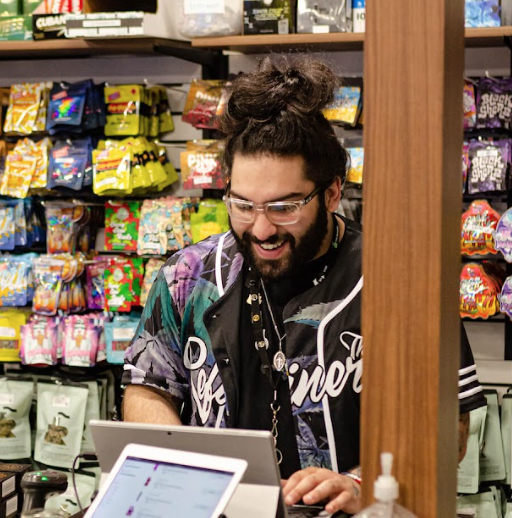
BUDTENDING CIRCA 2023 THE REFINERY KALAMAZOO MICHIGAN
The legal history of cannabis in the United States began with state-level prohibition in the early 20th century, with the first major federal limitations occurring in 1937. Starting with Oregon in 1973, individual states began to liberalize cannabis laws through decriminalization.Cannabis in California has been legal for medical use since 1996, and for recreational use since late 2016. The state of California has been at the forefront of efforts to liberalize cannabis laws in the United States, beginning in 1972 with the nation’s first ballot initiative attempting to legalize cannabis (Prop 19). Although it was unsuccessful, California would later become the first state to legalize medical cannabis with the passage of the Compassionate Use Act of 1996 (Prop 215). In November 2016, California voters approved the Adult Use of Marijuana Act (Prop 64) to legalize the recreational use of cannabis.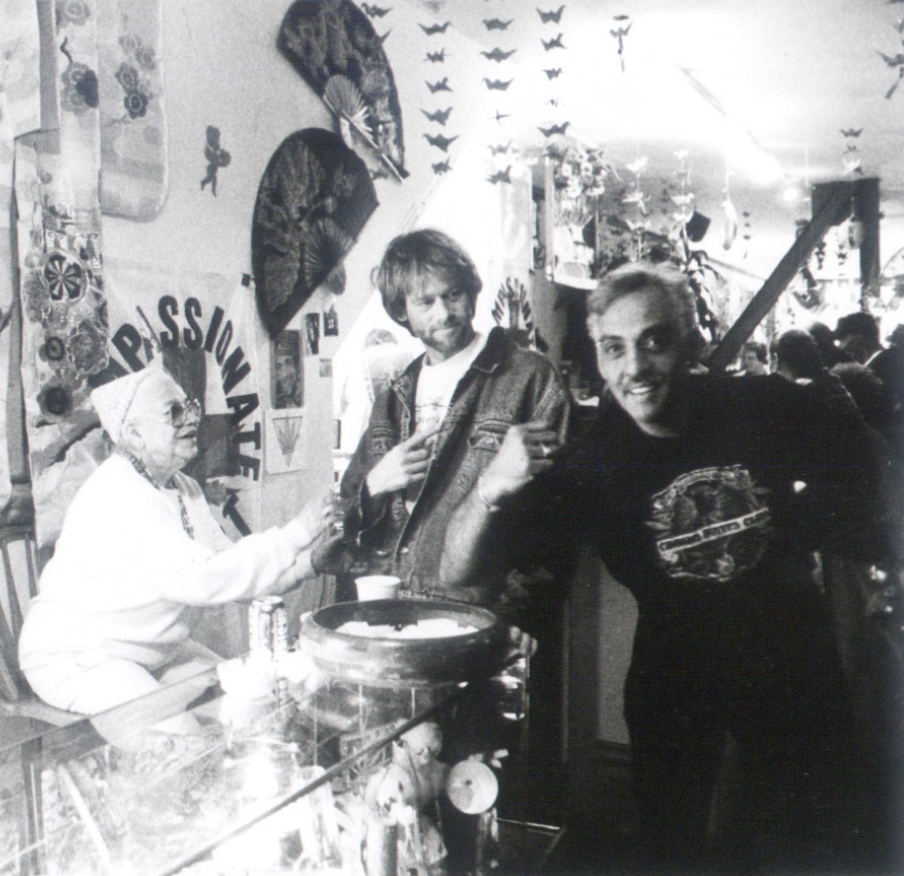
CANNABIS BUYERS CLUB FEATURING FOUNDERS “BROWNIE MARY” RATHBUN, DENNIS PERON, AND DALE GIERINGER
The first dispensary San Francisco Cannabis Buyers Club was founded in 1992 by Proposition 215 coauthors "Brownie Mary" Rathbun, Dennis Peron and Dale Gieringer. Washington state became the second state in the U.S. to develop a regulatory framework for marijuana dispensary operators improving the access to cannabis patients beyond the caregiver model.The term "marijuana dispensary" in the United States is most often used to refer to private organizations or companies that sell cannabis, particularly in the states of California, Colorado, Washington and Oregon. "Cannabis dispensary" is starting to become a more politically correct term as conscientious people prefer the use of the word cannabis which avoids using the more common Spanish slang word "marijuana". The club was formed by John Entwistle and Dennis Peron, widely credited as the "Father of Medical Marijuana." It began as a way to dispense marijuana to patients with HIV/AIDS and led to the founders co-authoring 1996 California Proposition 215 for legalization of medical cannabis in California.The club operated out of several floors at its location in San Francisco. The location was described as something similar to a coffee house with couches, chairs, and coffee tables. It had a menu which included edibles and loose marijuana. Membership in the club exceeded 8,000 at one point and membership required a doctor’s note certifying the patient had AIDS, cancer, or other condition for which marijuana could be used to alleviate pain.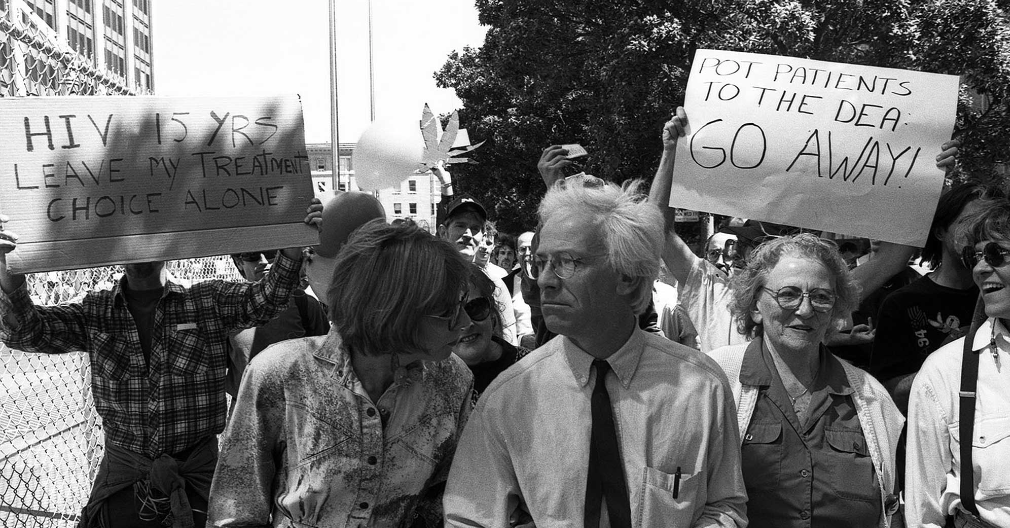
1972 SHOT FEATURING FIRST SIGNS OF PROTESTING AGAINST RAIDS
The dangers of involvement cannot go without comment, and this is doubly true for the brave souls who founded the San Francisco Cannabis Buyers Club and fought for the passage of Prop 215 regardless of the consequences—of which there were plenty. Just weeks before California voted on the proposition, state narcotics officers arrested Dennis Peron and had warrants for others involved—a move that is widely considered an attempt to demonize those involved with the Buyers Club and kill the proposition. This, of course, is in addition to the incessant arrests of Peron’s compatriots—Brownie Mary was arrested on three occasions as a result of her lobbying and efforts to provide medical cannabis to those in need.Now, over 20 years later, that pivotal piece of legislation has paved the way for the slow and steady march of legalization to continue across the country. It is not hyperbole to say that if you are able to enjoy legal cannabis where you live or, more importantly, are able to use cannabis to help manage pain or treat any number of conditions, you owe a great deal of thanks to the LGBT community and its supporters who fought for compassion for all. To quote Dr. Lawrence: “So thank Brownie Mary—and the tens of thousands of LGBT folk who have passed—next time you pass a smoke.”
1996 MAGAZINE ARTICLE FEATURING CANNABIS BUYERS CLUB RAIDS
Poet / Activist John Sinclair played a pivotal role in Michigan’s marijuana history. In 1969 he was arrested in Ann Arbor after offering joints to two undercover agents. His sentence was a shocking 10 years in jail. A wave of outrage spread throughout the state and beyond catching the attention of the already heated 60s counterculture movement.Two years later, 15,000 activists — including John Lennon, Yoko Ono, Allen Ginsburg and Bobby Seal — gathered in protest at the John Sinclair Freedom Rally in Ann Arbor. Their voices were heard loudly and clearly. Shortly after Sinclair was released. To this day, every year people from all over the United States gather to Ann Arbor in April to meet at the diag at noon to rally and keep history alive. They say those who forget history are often vulnerable to repeating it.Dispensaries in Michigan, before it was medically legalized, were continuously attempting to open doors to sell cannabis to their communities. With the San Fransisco Cannabis Buyers Club becoming the first regulated dispensary, it gave hope to many people all over the United States. This included the people of Michigan. Reguardless of how many times they were raided, shut down, arrested and more, that never scared away the people who knew the benefits of cannabis and foresaw the market way before it ever panned out and became what it is today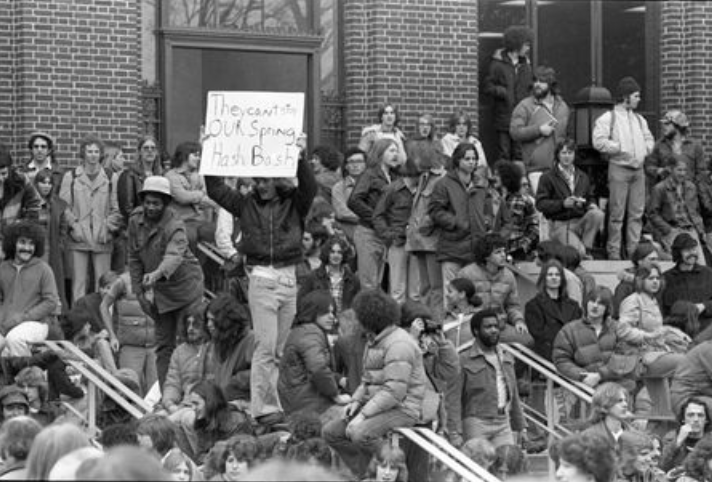
HASH BASH CIRCA 1972
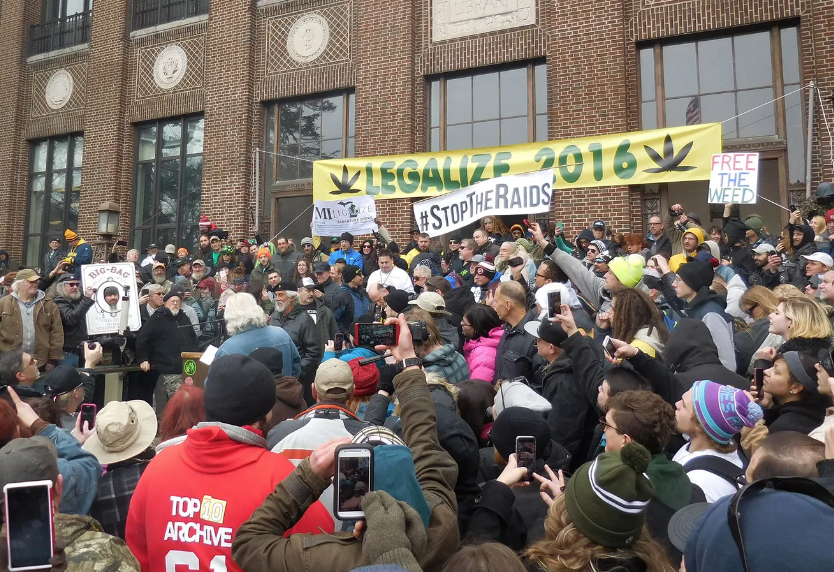
HASH BASH CIRCA 2020
The bravery that went into these small “gray labeled” dispensaries was ever lasting and closely followed those spirits who lobbyed in California in 1996. They just wouldn’t take no for an answer. There was hard personal evidence and experience that this plant was saving lives and ‘NO’ was not going to be taken lightly as more and more people became educated about cannabis.Walking into a gray labeled, not yet legalized dispensary in Michigan circa 2014 was interested to say the least. Pulling up into an unmarked building, being greeted (or not greeted) once you walked through those doors was normal and you could tell it was a get in and get out situation. After passing two white bearded gentleman literally growing weed behind the curtain, you were greeted by a gentleman who would pull out 2 jars of your choice. Indica or Sativa at the time and if you were lucky, you were given a medicated peanut butter ball made by his wife for the road home. It sure was the twilight zone and pre-marihuana medical card distribution. 

